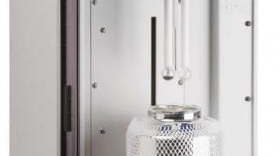Mind Attention Interface
The Mind Attention Interface is a novel interface for a Virtual Reality (VR) theatre using a combination of electroencephalogram (EEG) biofeedback and eye-gaze tracking. This interface will support research projects in Human Computer Interaction (HCI), Neural Networks, Data Mining, Machine Recognition, Visual Sciences and New Media Arts.

Solar thermal collector array and weather station
Solar heat may be collected using flat plate or evacuated tube collector arrays of up to 20 m2 gross area. Controlled temperatures of up to 120°C may be generated by the array. Heat may be exchanged into an external circuit through a plate heat exchanger. The array is accompanied by a weather station measuring global horizontal radiation, direct beam radiation, the solar spectrum, ambient temperature, wind speed, wind direction and rainfall. Weather data is logged continuously.
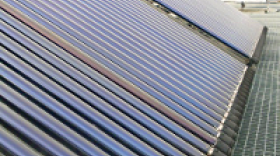
Solar cooling machines
The Solar Thermal Group maintains test and development equipment for the evaluation of ejector solar cooling including test rigs for fixed and variable geometry ejectors based on solar or artificial heat sources.

Gas hydrate reactor
The gas hydrate reactor and associated facilities enable research into formation, properties and kinetics of gas hydrate formulations. The facilities are used to develop gas hydrates for energy storage applications in air conditioning. This facility is being expanded to include a demonstration cold storage unit with a storage capacity of 20kWh at 8°C.

45 kWe high-flux solar simulator
A new high-flux solar simulator for high-temperature solar thermal and thermochemical research has been designed at the Australian National University. The simulator consists of 18 radiation modules, arranged in two concentric rows. Each module consists of a 2.5 kWe short-arc xenon lamp, close-coupled to a truncated ellipsoidal mirror of high-surface quality. The predicted radiative output in the focal plane is up to 15.4 kW, with a transfer efficiency of 81%. The predicted peak radiative flux at the focal plane is 9.5 MW m-2. The radiative flux, radiative power and radiation transfer efficiency for a 30-mm diameter circular flat target at the focal plane are 6.7 MW m-2, 4.7 kW, and 25%, respectively. For a 60-mm diameter circular flat target, the radiative flux, radiative power and radiation transfer efficiency are 3.8 MW m-2, 10.6 kW, and 56%, respectively.
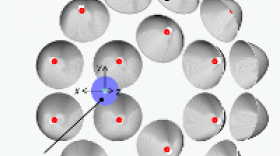
Solar trough
The Solar Thermal Group operates a trough-concentrator test bed that consists of a rotating horizontal platform onto which a 3.5 m2 horizontal axis tracking trough unit is mounted. This system allows two axis sun-tracking, so that short modules of trough systems, which would normally be used in a long single axis tracking configuration, can be tested.
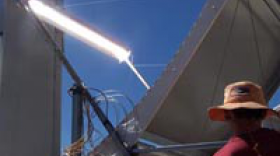
SG3 400-m2 solar dish
The ANU SG3 dish has 387 m2 of mirror aperture area. At the focal plane it produces an average concentration of 900 suns over a disk with diameter 680 mm, and a peak concentration of 1,540 suns. Construction of the SG3 dish was completed in May 1993, and it first generated steam on sun in June 1994.
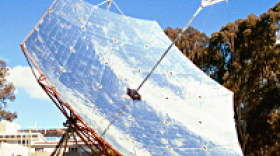
SG4 500-m2 solar dish
The ANU SG4 (Solar Generator 4) dish is the world’s largest paraboloidal dish solar concentrator, with 489 m2 of mirror aperture area. At the focal plane it produces an average concentration of 2,100 suns over a disk with diameter 530 mm, and a peak concentration of 14,000 suns. Construction of the SG4 dish was completed in June 2009, and it first generated steam on sun in July 2010. SG4 was developed and built by ANU in collaboration with Canberra-based company Wizard Power, with support from an AusIndustry Renewable Energy Development Initiative (REDI) grant.
This dish is a prototype of a design (the ‘Generation II Big Dish’) that is intended for use in large scale solar thermal power generation systems, where large arrays of dishes are joined to feed energy to a central power generation plant. SG4 is used to obtain experimental data supporting investigations into energy conversion processes, to seek design improvements and to support efforts to license and commercialize the technology. SG4 is currently operated with a monotube boiler receiver which produces superheated steam at up to 550°C at 5.0 MPa.
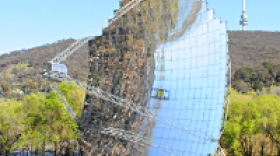
D2 Phaser X-Ray Diffractometer
The D2 Phaser is the latest in desktop analyzers that utilizes X-ray powder diffraction for qualitative, quantitative and structure analysis of crystalline phases. The D2 Phaser is equipped with an integrated PC and a flat screen monitor and integrated cooling loop requiring no external water supply or water chiller. The very easy-to-use workflow software Diffrac.Suite allows measurement and analysis right out of the box.
Technical data:
- Power supply 90 – 250V, 50 – 60Hz
- Operating temperature range: 5 - 35ºC
- Theta geometry, sample is always horizontal
- 141 mm measurement circle radius
- Maximum scanning range: -3 … 160° 2-Theta
- Minimum step size: 0.005° 2Theta
- Accuracy equal or better than ± 0.02° throughout the entire measuring range
- Minimum peak width (FWHM): better than 0.05° 2Theta
- X-ray wavelengths:, Cu, standard ceramic sealed tube
- X-ray generation: 30 kV / 10 mA
- Sample spinner, rotation freely adjustable from 1°/min to 80°/min
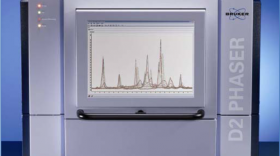
Multi-Mode Microplate Reader: Infinite M200 PRO
The monochromator technology used in the Infinite M200 PRO will allow discrete selection of any wavelength from 230nm to 1000nm for absorbance measurements. Additionally, the monochromators also facilitate fluorescence measurements from 230nm (excitation) to 600nm (emission) with the ‘standard’ Photo-Multiplier Tube (PMT) or 230nm (excitation) to 850nm (emission) with the ‘enhanced’ PMT. The Infinite M200 PRO also facilitates spectral scanning in both microplates and cuvettes.

Rheometer: Kinexus Pro
Targeted at the rheological characterization of dispersions and other complex fluids and soft solids, the Kinexus pro rheometer has unprecedented dual-action capabilities for both shear and vertical testing. A modular rheometer with ‘plug and play’ functionality for all measuring systems and environmental control units.

Nitrogen Adsorption: Tristar II 3020
The TriStar II 3020 is a fully automated, three-station, surface area and porosity analyzer that delivers high-quality data. It is capable of increasing the speed and efficiency of routine quality control analyses, yet has the accuracy, resolution, and data reduction capability to meet most research requirements. The TriStar II also features a new Krypton Option, allowing measurements in the very low surface area range.
